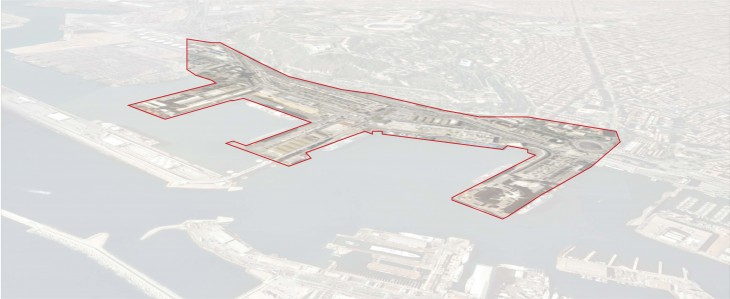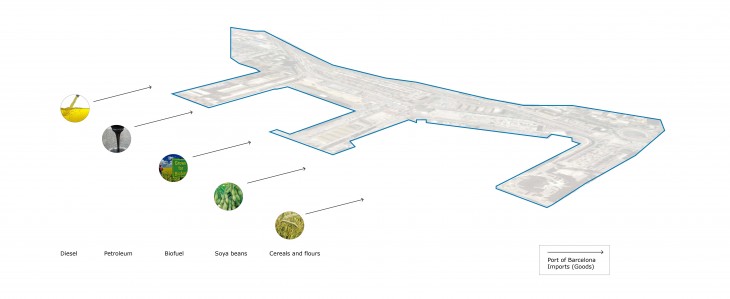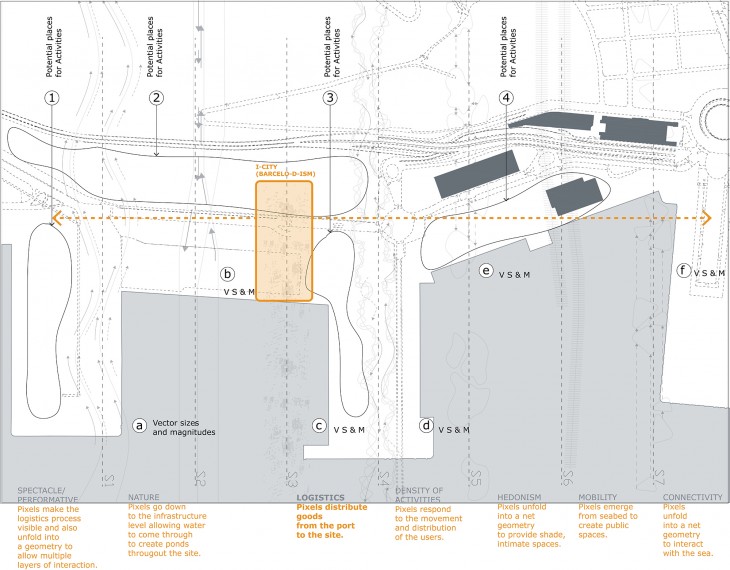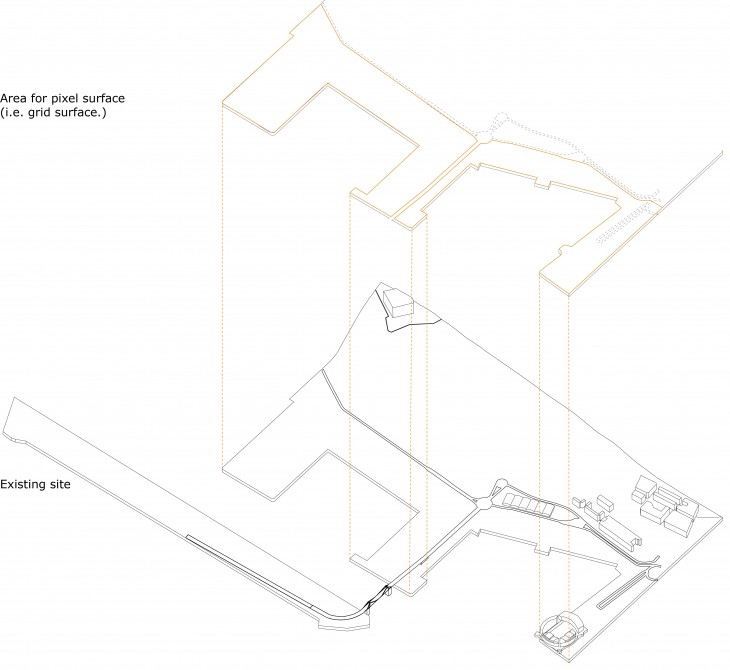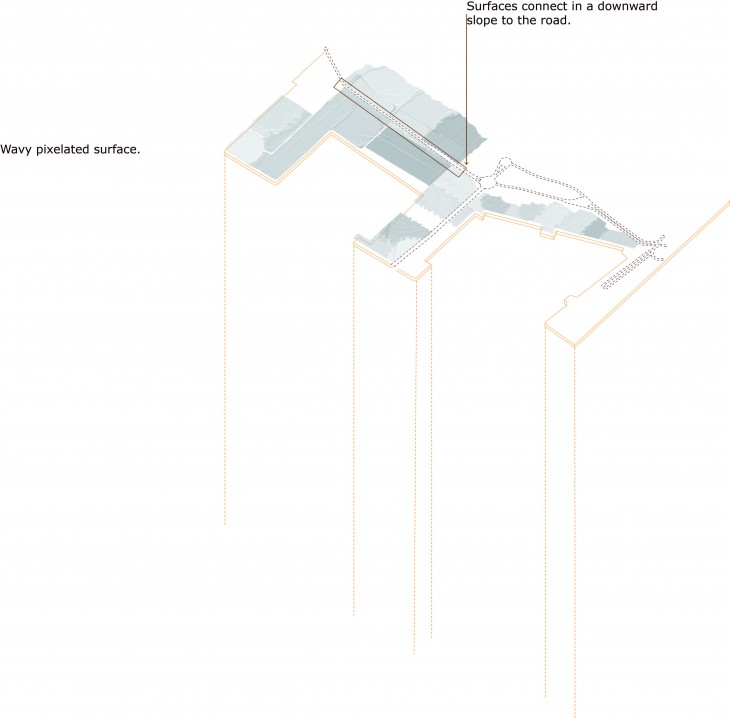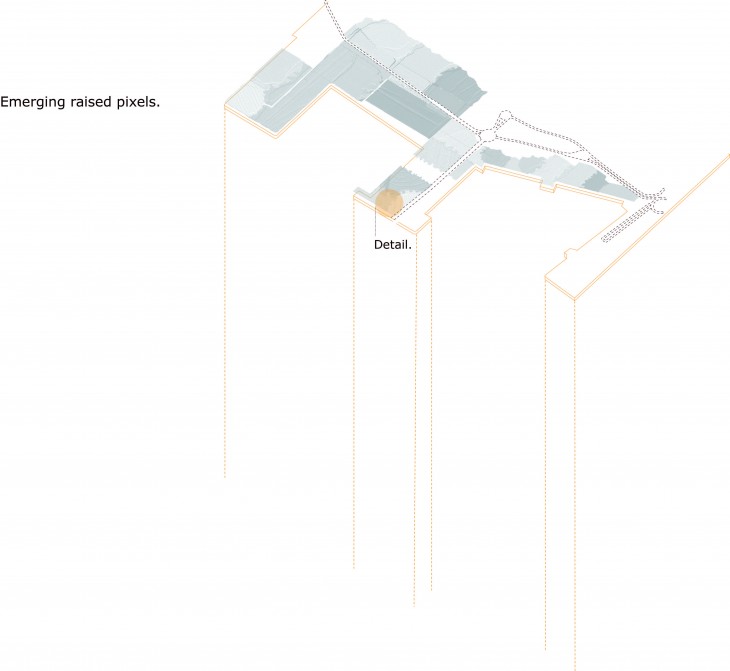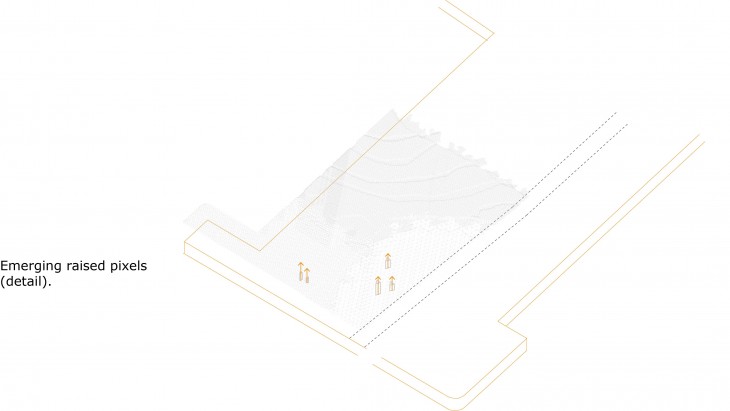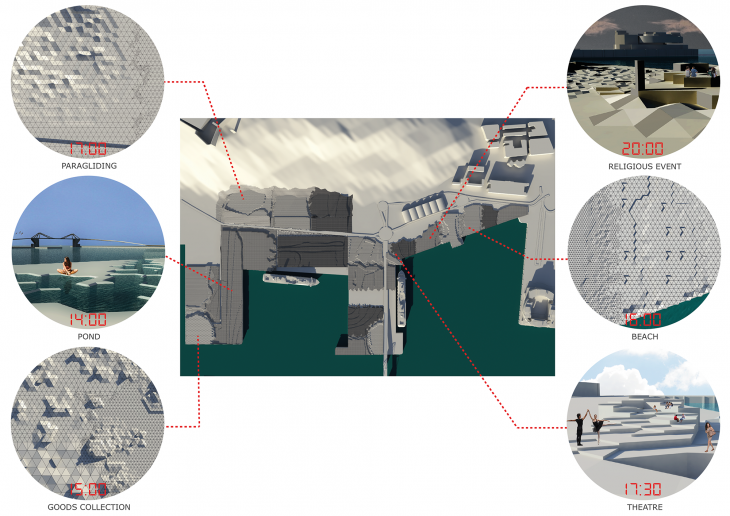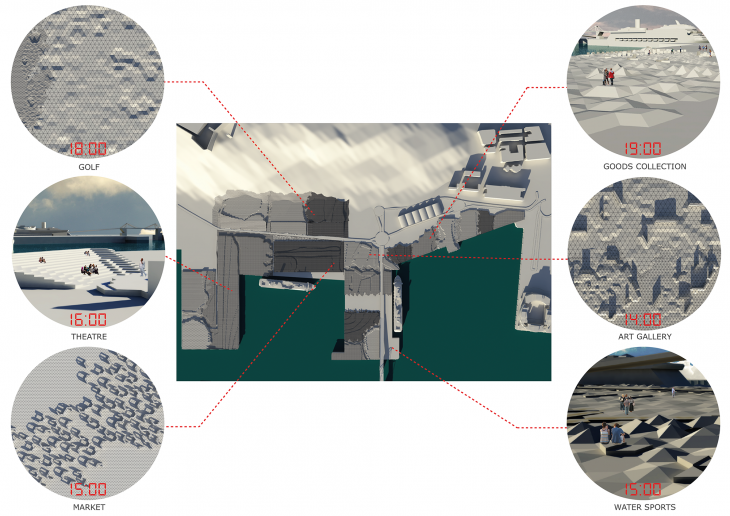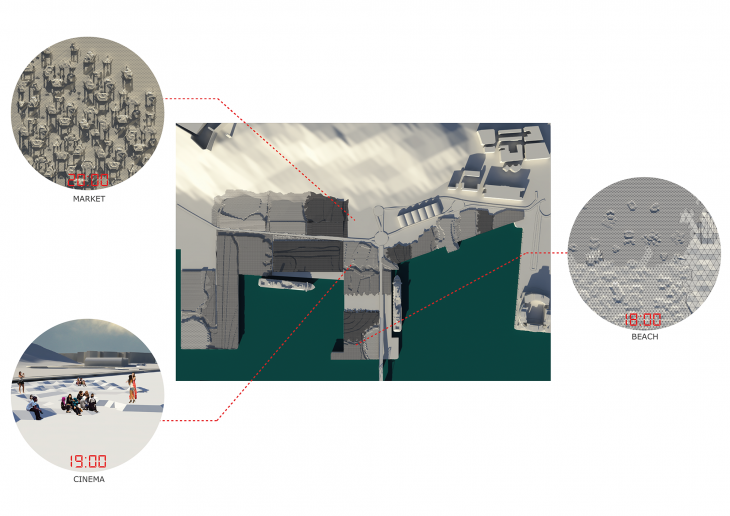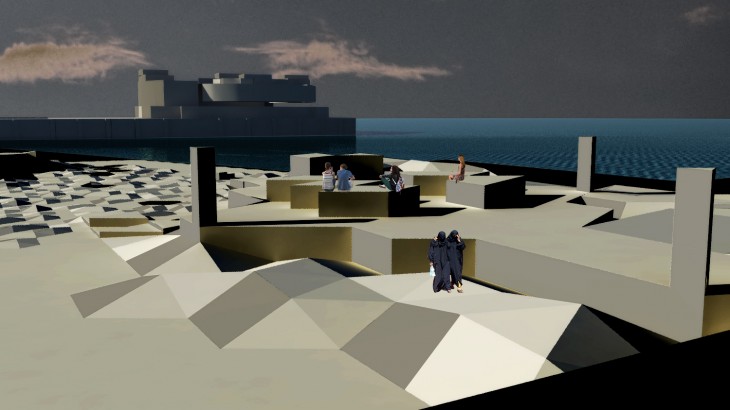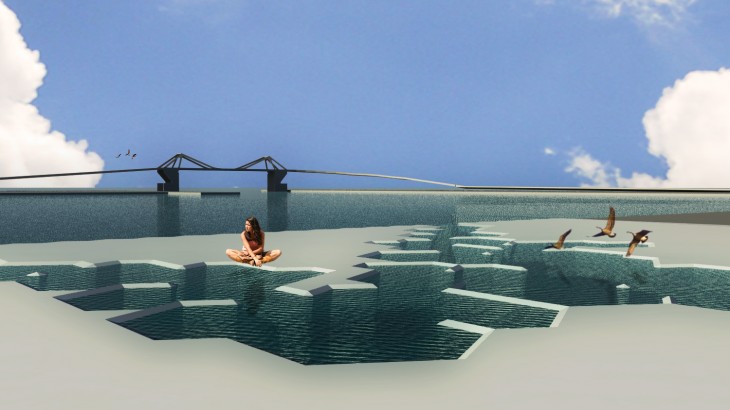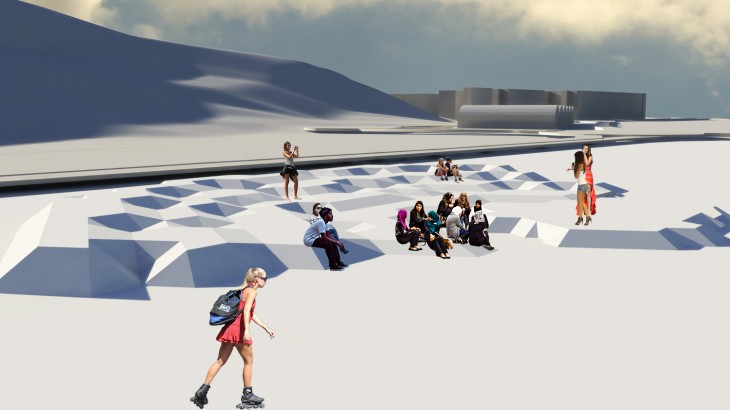The pixel’s minute urban scale geometry and transformability may appear to be far fetched, but innovative ideas stem from thinking outside of the box. It can be said that predictions of the future are focused on and are reflective of contemporary issues, in so far that the project attempts to seek ways of relating the Barcelona Port and the arrival (or departure) of goods. Thus rooting the thesis in the distribution of goods.
The consumption-focused lifestyle of an urban population adds fuel to the notion of distribution further. This is an area of immediate opportunity. Efficiency is driven through the urban grid distributing goods to create social places, activities that are as a result useful and enjoyable. And when one looks out to imagine a future, it is described with, “bike paths and sunny restaurant terraces (…) pretty neighborhoods and great art,” enforcing the aesthetic value of a place.
Although health, mechanical stairs and the customs worker may appear to have nothing in common, it is our duty as designers, innovators to explore the relationships.
According to the Port’s statistics, we looked at the type of goods that are being imported, and we predict that in the future, some products will be of more value. The use of agricultural products i.e. soya beans, cereals and flours will sustain human nutrition; and the chemical products to support transportation devices.
Here we applied the vectors to the movement of goods, in order to establish a relationship to the site.
The relevance of this time line was to provide an understanding of efficiency, through manufacturing and productivity terms, in order to support the flow of goods.
Video Link:
https://www.youtube.com/watch?v=C3MfS8TjxNo
Booklet Link:
http://issuu.com/rossanagraca/docs/booklet_
Team:
Ayaan Barodawala
Rossana Graça
Saad Saheen


